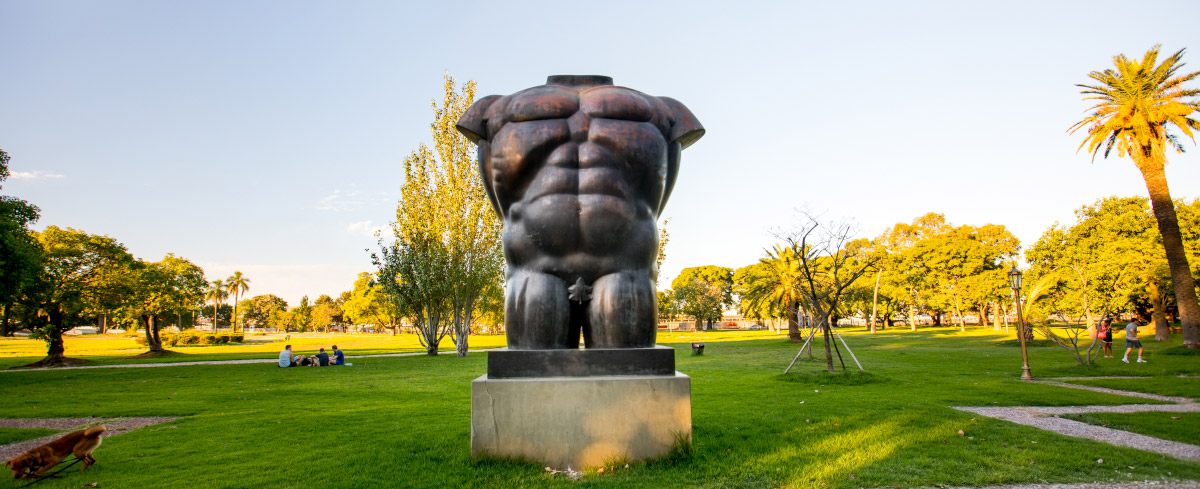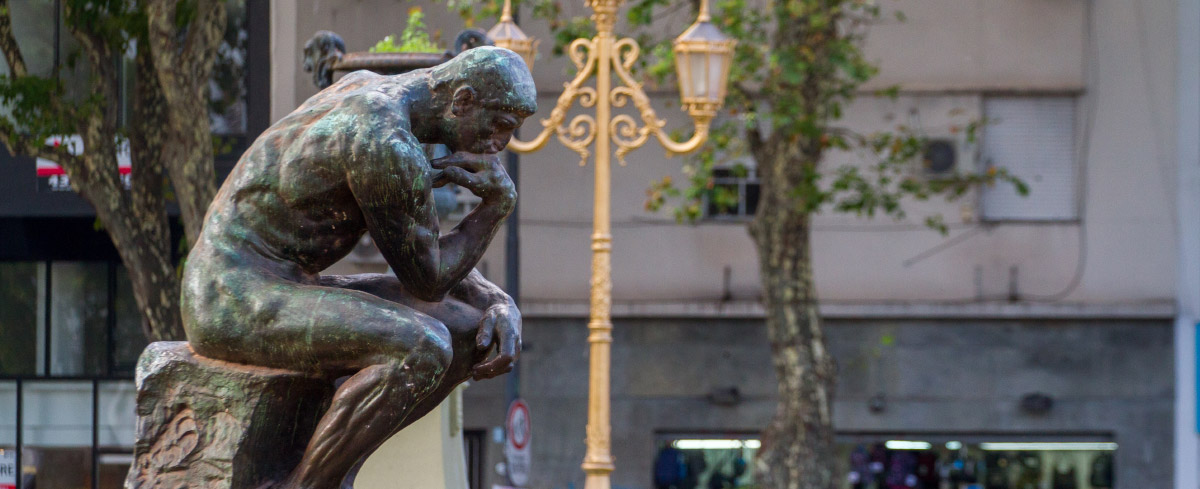Monument to the Porteño taxi
Avenida de los Italianos and Macacha Güemes, Puerto Madero
A life-size taxi driver with a rectangular wallet typical of his profession leans on the side of his car - a Siam Di Tella 1500, the Argentine model often used by taxi drivers in the 1960s. The sculpture was inaugurated in the year 2012 and is the work of Fernando Pugliese, who’s also a musician, a lawyer and a historian to boot!
Monument to the National Ballet
Lavalle and Talcahuano, San Nicolás
A pair of dancers (Norma Fontenla and José Neglia) bears memory to the nine members of the Teatro Colón’s Ballet Estable who died in an aeroplane accident on October 10, 1971, reason why the piece, made by the sculptor Carlos de la Cárcova, is located just a few metres from the Colón itself. And if you haven’t already visited the theatre, now’s a good moment!
Male Torso
Av. del Libertador 2000, Recoleta
It’s hard to miss this peculiar statue of a headless male torso in Parque Thays. But what is it exactly? Well, inaugurated in 1994 and made entirely of bronze, with a stone base, it’s the work of Colombian artist Fernando Botero, famous for highlighting volume in his figures, and my does he do it well!
The Thinker
Av. de Mayo and Luis Sáenz Peña, Monserrat
This replica of Auguste Rodin’s famous statue arrived in Buenos Aires in 1907. It was made from bronze using the mould of the original and bears the signature of the French artist. During the centenary of Argentina’s revolution of independence it was exhibited in front of the National Congress building. It’s now located just a short distance from there. Who oversaw the project? Eduardo Schiaffino, the first director of the Museum of Fine Arts.
An Ode to Work
Av. Paseo Colón and Av. Independencia, San Telmo
In Plazoleta Eva Perón, a rectangular base supports 14 figures: children, women and men pulling an immense stone as a symbol of work. The piece allegorically expresses the meaning of strength and liberation in a powerful and clear message.
Monument to Graft
Av. 9 de Julio 1925, Monserrat
On Avenida 9 de Julio itself, in the very heart of the city, there’s a sculpture representing bribery. Right on the corner of the former Ministry for Public Works building, at the height of the second floor, there’s a sculpture of a man with treasure in one hand, and the other hand open to receive more, while his eyes look to check no one’s coming. The work was inaugurated in 1933 to denounce the corruption of the era.
Monument to Little Red Riding Hood and the Wolf
Av. Sarmiento and Avenida del Libertador, Palermo
Buenos Aires is one of the few cities to have a sculpture inspired by the famous tale. Why? No one knows! All we know is that it’s the work of the French sculptor Jean Carlus and was bought by the municipal government in 1937.
Monument to Don Quixote
Avenida de Mayo 100, Monserrat
The Spanish government offered this homage to the “ingenious nobleman” of Cervantes’ novel as a gift to the city in 1980. Located in the very centre of the city, surrounded by traffic rather than windmills, it shows Don Quixote on his horse, Rocinante, while the pedestal represents the plains of La Mancha.

